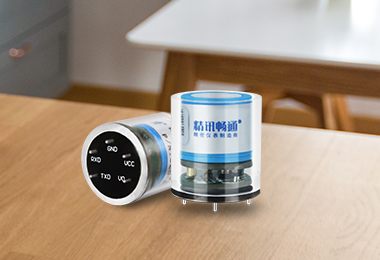ndustrial facilities such as chemical manufacturing plants, oil refineries, and power generation stations produce hazardous gases. Industry workers who are exposed to these gases are at risk of developing long-term health issues. To ensure the safety of workers, portable gas sensors have become increasingly essential in industrial health and safety monitoring.

Portable gas sensors are compact devices that can be easily carried and deployed by workers. They measure the concentration of hazardous gases and provide real-time readings to alert workers when exposure levels exceed acceptable limits. Depending on the industry's needs, different types of portable gas sensors are available, including electrochemical, infrared, photoionization, and catalytic bead sensors.
Electrochemical sensors use a chemical reaction between the gas and an electrolyte to generate an electrical current that is directly proportional to the gas concentration. These sensors are highly sensitive and selective, making them useful for detecting specific gases such as carbon monoxide (CO), hydrogen sulfide (H2S), and ammonia (NH3).
Infrared sensors detect gas by measuring the absorption of light at specific wavelengths. This sensor type is ideal for detecting methane (CH4) leaks, which can pose serious risks in industries such as natural gas extraction. The accuracy and stability of this type of sensor make it suitable for outdoor use, where exposure to the sun and other weather variables must be taken into account.
Photoionization detectors (PID) detect volatile organic compounds (VOCs). In contrast to electrochemical or infrared sensors, PIDs do not require direct contact with the gas to be detected. They operate by ionizing the gas molecules with ultraviolet light and then measuring the current generated by the ionization. PIDs offer high sensitivity and selectivity to VOCs, but they have limitations when it comes to detecting inorganic gases.
Catalytic bead sensors utilize a platinum wire coated with a catalyst that promotes combustion when exposed to flammable gases. When a gas comes into contact with the catalyst, it reacts and heats up the wire. The increase in temperature causes a corresponding change in resistance, which is detected by a microprocessor. Catalytic bead sensors are ideal for detecting combustible gases such as methane, propane, and hydrogen.
Recent advancements have also led to the development of hybrid gas sensors that combine different sensor technologies to enhance measurement accuracy and selectivity.
One significant advantage of portable gas sensors is their ability to provide real-time data on gas concentrations, allowing workers to take immediate action when necessary. This can help prevent accidents and minimize exposure to hazardous gases. Portable gas sensors also help identify the source of emissions and monitor air quality in confined spaces, making them an essential tool for maintaining workplace safety.
Furthermore, these sensors offer simplicity and ease of use. They require minimal training and are designed for single-button operation, enabling workers to focus on their job functions instead of complicated technical procedures.
Overall, portable gas sensors are essential tools for industrial health and safety monitoring. From identifying and mitigating hazardous gases to providing accurate real-time data, portable gas sensors enable safer work environments and healthier living conditions. As the technology continues to advance, we can expect further innovation in this space, including improvements in accuracy, range, and compatibility with smart devices and cloud-based management systems.
 : +86 155 8830 2704
: +86 155 8830 2704 : jxdziot@gmail.com
: jxdziot@gmail.com
